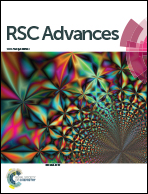Advances in bioprocessing for efficient bio manufacture
Abstract
Bioprocesses use cost-effective renewable resources as feedstock to produce various products with less energy consumption under mild conditions. The technical progress in the modification of biocatalysts including enzymes and cells has significantly improved their efficiencies. In this article, the strategies involving molecular, cellular and community levels for improving various bioprocesses are reviewed with specific examples presented. To modify of enzyme molecule to better fit biomanufacture, semi-rational design of enzyme molecules and intensification of substrate channelling have been proved as effective methods. Progress in metabolic engineering and synthetic biology has promoted engineering the intelligent microbial cell factories. Through modularization of non-native synthesis pathways, microbial cell factories can be optimized at whole cellular levels, and consequently achieved the efficient production of pharmaceuticals, biofuels and chemical compounds as well as natural products. The use of synergistic interactions in microbial communities would provide an opportunity to engineer more complex and robust functions. In addition, several special technologies including bioprocessing under microgravity conditions and nanobiotechnology provide novel ways for developing new applied areas and opportunity to improve bioprocess efficiency.



 Please wait while we load your content...
Please wait while we load your content...